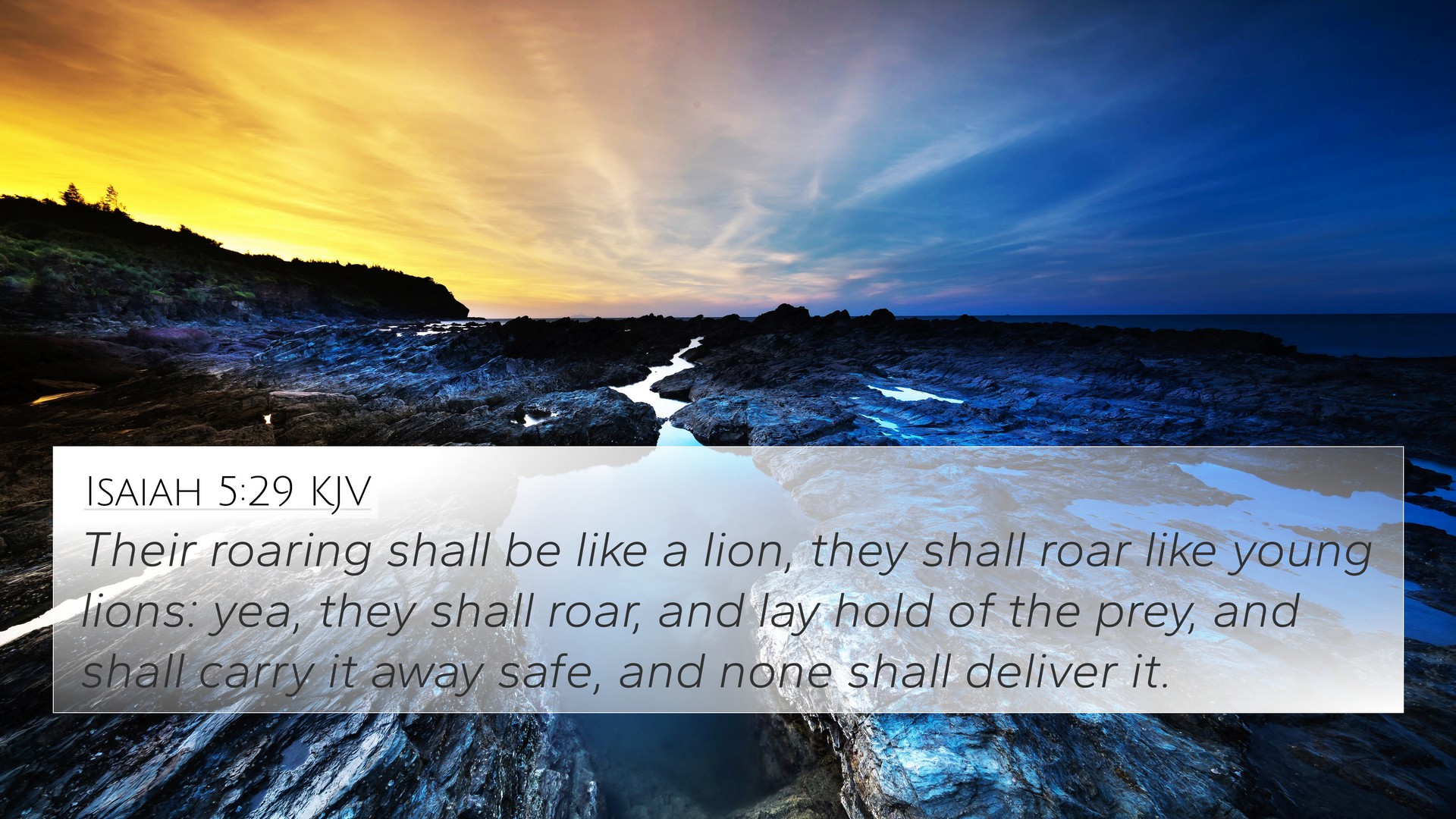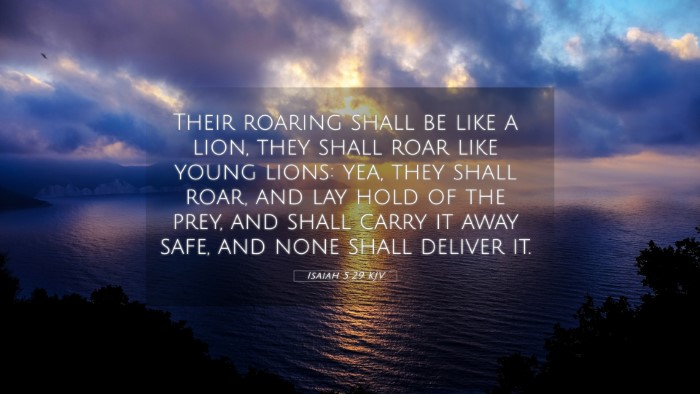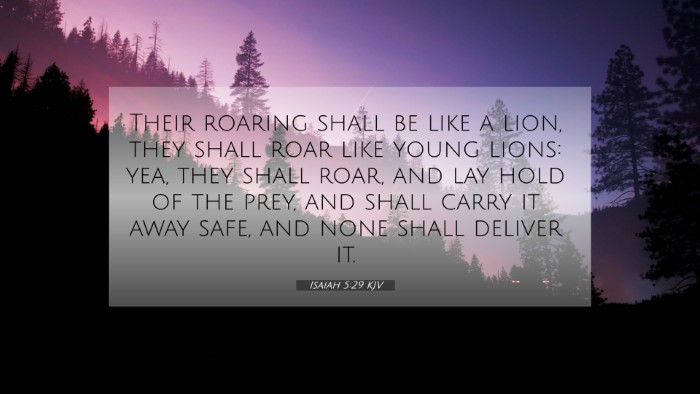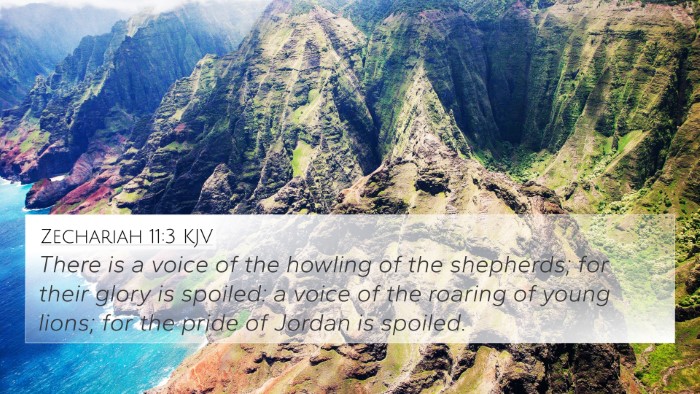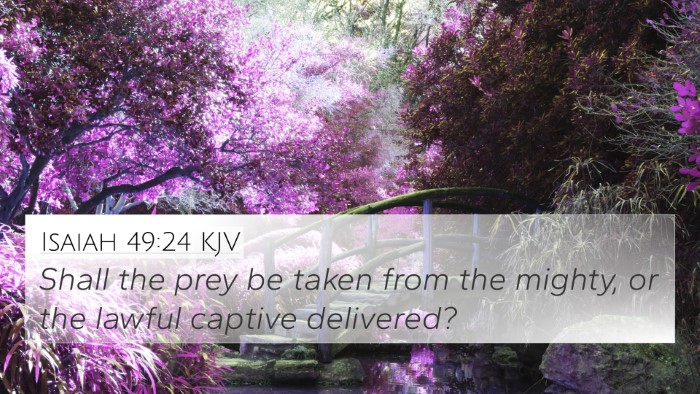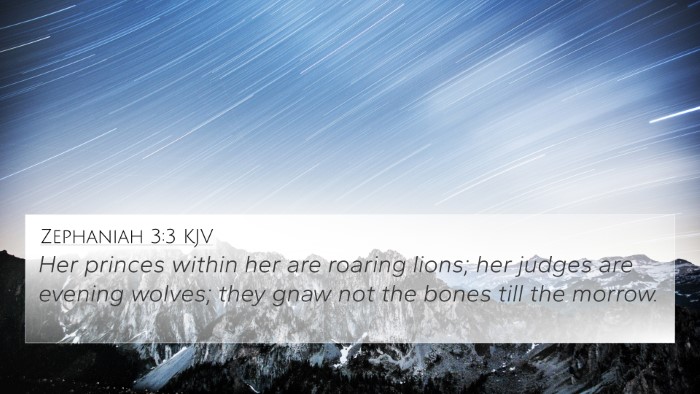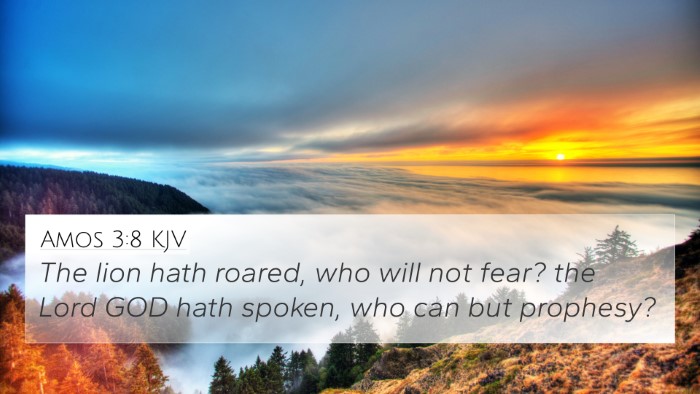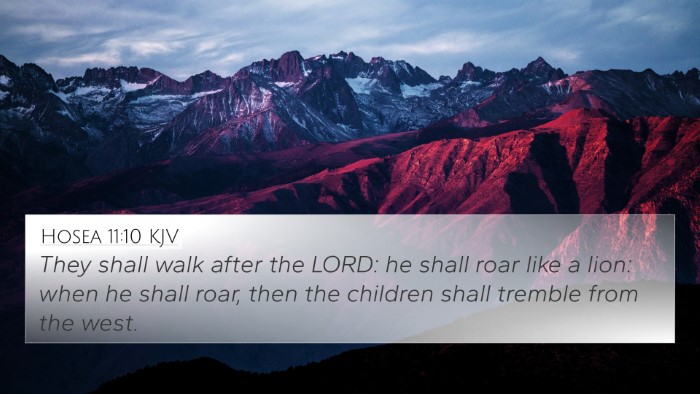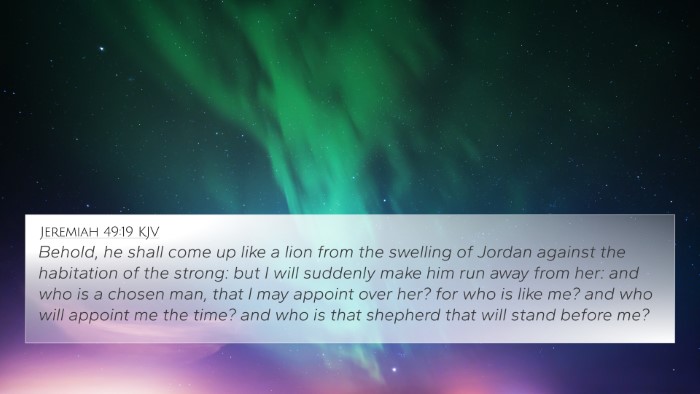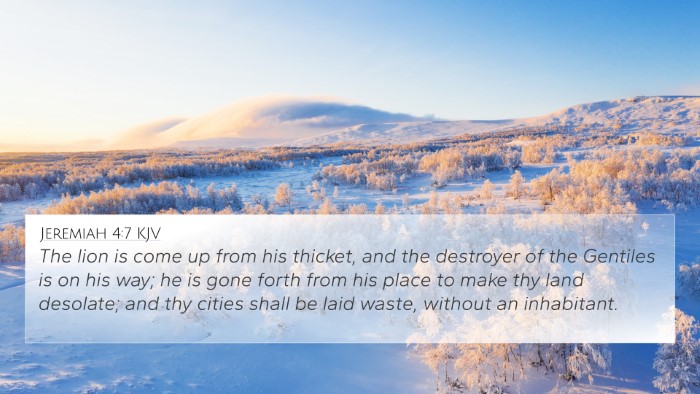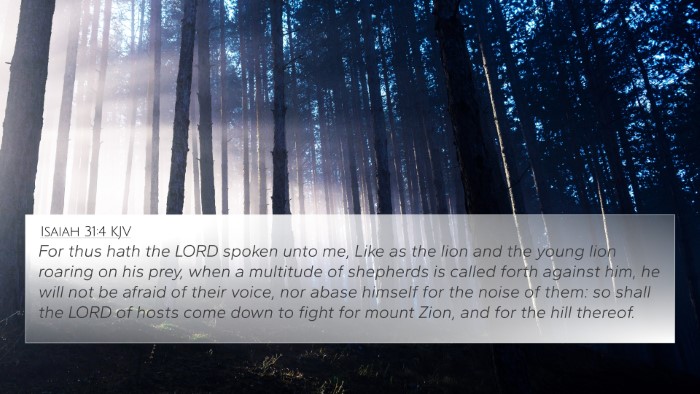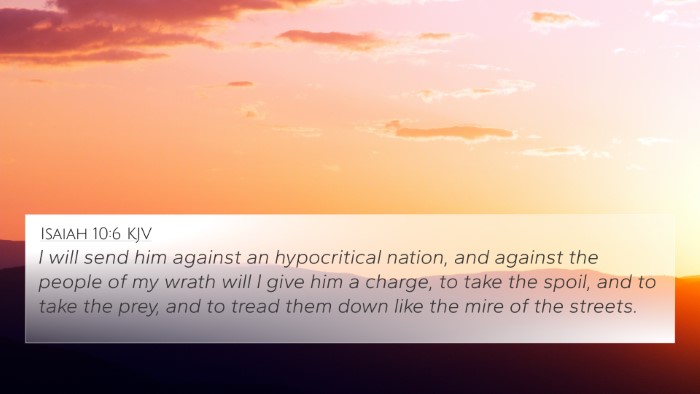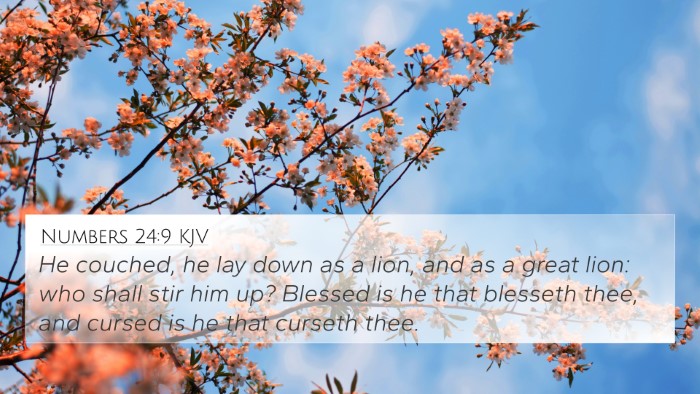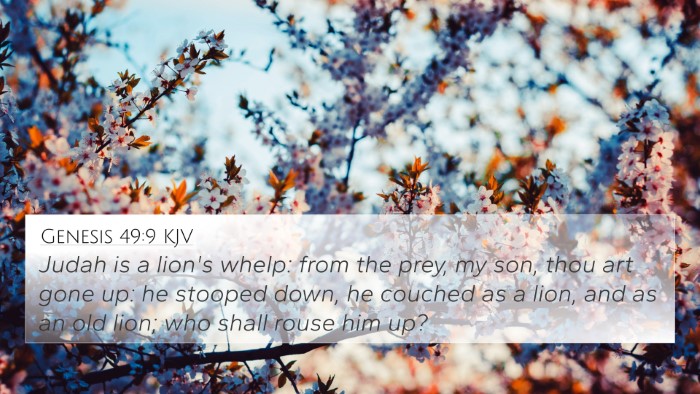Understanding Isaiah 5:29
Isaiah 5:29 states: "Their roaring shall be like a lion, and their young lions shall roar; they shall growl and lay hold of the prey, and carry it away safe, and none shall deliver it."
This verse emphasizes the fierce and relentless nature of the enemies of Judah, portrayed through the metaphor of roaring lions. It serves as a somber reminder of the dangers Israel faced due to their own disobedience to God.
Summary of Interpretations
The insights from respected public domain commentaries can provide depth to our understanding of this verse:
- Matthew Henry notes that the roaring signifies a foreboding presence, suggesting the enemies are both powerful and terrifying. The imagery reflects a time of crisis for Judah, with lions symbolizing the urgent threat they faced.
- Albert Barnes observes that the strength and ferocity of the lion illustrate how the adversaries of Judah would consume and devastate them. The lions represent not just physical power but also the spiritual peril of turning away from God.
- Adam Clarke emphasizes that these lions shall lay hold of their prey, which in this context means the people of Israel who have strayed from their covenant with God. Thus, divine protection is notably absent in this scenario.
Bible Verse Cross-References
To fully appreciate Isaiah 5:29, we can identify several Bible verse cross-references that enhance its meaning and illustrate the interconnected nature of Scripture. These connections reveal thematic parallels and underscore the Bible's cohesive message:
- Jeremiah 5:6: "Wherefore a lion out of the forest shall slay them, and a wolf of the evenings shall spoil them..." – This verse similarly depicts the danger posed by predatory creatures as a metaphor for impending judgment.
- 1 Peter 5:8: "Be sober, be vigilant; because your adversary the devil, as a roaring lion, walketh about..." – This New Testament reference draws direct parallels between lions and spiritual adversities.
- Amos 3:8: "The lion hath roared, who will not fear?" – Another affirmation of the powerful symbolism of roaring lions, indicating divine authority and impending judgment.
- Psalm 22:13: "They gaped upon me with their mouths, as a ravening and a roaring lion." – This portrays the mentality of Israel’s enemies against God's people, emphasizing their ferocity.
- Isaiah 31:4: "For thus hath the LORD spoken unto me, Like as the lion and the young lion roaring on his prey..." – This reference illustrates the protective nature of God compared to the eating habits of vicious creatures.
- Matthew 7:15: "Beware of false prophets, which come to you in sheep's clothing, but inwardly they are ravening wolves." – This warns of deceptive appearances leading to harm, similar to the ravenous behavior of lions.
- Ezekiel 22:25: "There is a conspiracy of her prophets in the midst thereof, like a roaring lion ravening the prey..." – This further connects roars to the actions of leaders misleading the people.
Exploring Themes and Connections
The themes found in Isaiah 5:29 resonate throughout both the Old and New Testaments, drawing connections through symbolism, prophetic language, and cautionary tales regarding the disobedience of God's people:
- Thematic Bible verse connections: The consistent portrayal of predators symbolizes the reality of sin and its consequences, as we see parallels across prophetic literature warning against straying from God’s commands.
- Comparative Bible verse analysis: Analyzing verses from Isaiah alongside those in Jeremiah and Ezekiel can reveal a broader narrative on the perils of disregarding God's instructions.
- Inter-Biblical dialogue: The resonance of themes across different authors emphasizes a unified divine message about judgment and the importance of vigilance against spiritual threats.
Conclusion
Isaiah 5:29 serves as a poignant reminder of the threats faced by those who stray from God’s path. By utilizing tools for Bible cross-referencing, believers can deepen their understanding of the text, uncovering layers of meaning woven throughout Scripture.
In conclusion, this verse invites readers to reflect on the ferocity of unaddressed sin and the protection found in returning to God. Through systematic cross-referencing, the faith community can gain insights into how their current struggles mirror those of God's people throughout history.
